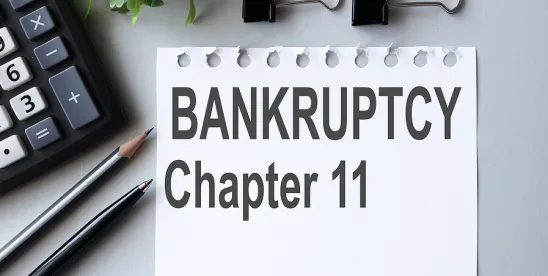A main goal in bankruptcy is to get in and out as quickly as possible to minimize costs. It is often the case that even though a substantial portion of a debtor’s assets have been liquidated in bankruptcy, some valuable assets will remain that can provide additional sources of recovery to creditors. These assets may include smaller pieces of real estate, accounts receivable, joint venture ownership interests, and claims and causes of action, among others.
In a chapter 11 case, the debtor exits bankruptcy by confirming a plan and having the plan go effective. When a debtor has assets remaining but is otherwise ready to exit the bankruptcy case – for example, because it has closed a sale of a substantial portion of its assets – the plan typically provides for the formation of a liquidation trust on the plan effective date. All remaining assets are transferred to the trust for liquidation, and any proceeds are distributed to creditors, i.e., the trust beneficiaries, in accordance with the plan.
The liquidation trust is established and governed by the plan and a liquidation trust agreement. A liquidation trustee is appointed to administer the trust and is granted broad powers to, among other things, liquidate assets, investigate, prosecute, and settle causes of action, object to, resolve, and pay claims, and make distributions to trust beneficiaries.
Trust beneficiaries typically appoint members of a trust advisory or oversight committee who have consultation and approval rights over certain actions proposed to be taken by the liquidation trustee. For example, the trustee may need approval from the oversight committee to resolve claims or causes of action above a certain amount, or to liquidate certain high-value assets.
Who serves as liquidation trustee and how many representatives each trust beneficiary appoints to the oversight committee are typically negotiated in connection with the plan process. The liquidation trustee may have been a professional involved in the bankruptcy, or it may be an outsider with experience serving in such a role. The oversight committee members may be creditors themselves or may be appointed as representatives of the creditors. Trust assets are typically used to compensate the liquidation trustee for its services and reimburse it for its costs and expenses, including for its retained professionals, though oftentimes initial seed funding is also required. Trust oversight committee members may receive modest compensation, which is typically capped, but which may offer an incentive for a creditor or a creditor-appointee to serve.
The role of the trust oversight committee is an important one, as the assets transferred to the trust may provide additional valuable sources of recovery to creditors. Trust beneficiaries are often creditors from different classes under the plan, and therefore may have differing interests and be entitled to different treatment. For example, a secured creditor with a lien on a parcel of real estate may be the sole beneficiary from the sale of such real estate, and therefore has an interest in overseeing how the property is marketed and sold. Even when trust beneficiaries share a right to recover from the same assets, such as from the prosecution of causes of action, they may have differing views or interests as to the potential value of the claims, whether it makes sense to settle them, and overall strategy.
When all assets are liquidated, claims resolved, distributions made, and the estates are otherwise wound down, the trust will be dissolved. Often, this does not occur until years later.




 />i
/>i

